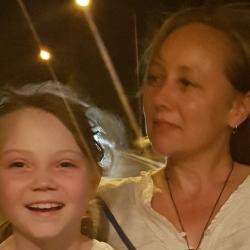Biography
Research
- The primary focus of my work has been investigating how nano and sub-micron sized particles influence cellular immune responses, utilizing conventional and imaging flow cytometry as key techniques. I am especially passionate about the use of imaging techniques for quantitative deep profiling of cells and internal cellular processes, to advance our understanding of cellular mechanisms in heath and disease, and for the development of novel therapeutics.
Publications
Image‐Based Cell Profiling Enables Quantitative Tissue Microscopy in Gastroenterology
Cytometry Part A
2020-12-23 | journal-article
DOI: 10.1002/cyto.a.24042
Small and dangerous? Potential toxicity mechanisms of common exposure particles and nanoparticles
Current Opinion in Toxicology
2020-02 | journal-article
DOI: 10.1016/j.cotox.2020.01.006
Imaging flow cytometry methods for quantitative analysis of label-free crystalline silica particle interactions with immune cells
AIMS Biophysics
2020 | journal-article
DOI: 10.3934/BIOPHY.2020012
Ultrasmall silica nanoparticles directly ligate the T cell receptor complex
Proceedings of the National Academy of Sciences
2019-12-23 | journal-article
DOI: 10.1073/pnas.1911360117Part of ISSN: 0027-8424Part of ISSN: 1091-6490
Non-Functionalized Ultrasmall Silica Nanoparticles Directly and Size-Selectively Activate T Cells
ACS Nano
2018-11-27 | journal-article
DOI: 10.1021/acsnano.8b03363Part of ISSN: 1936-0851Part of ISSN: 1936-086X
Imaging flow cytometry assays for quantifying pigment grade titanium dioxide particle internalization and interactions with immune cells in whole blood.
Cytometry. Part A : the journal of the International Society for Analytical Cytology
2017-09 | journal-article
PMID: 28941170DOI: 10.1002/cyto.a.23245
Reduction of T-Helper Cell Responses to Recall Antigen Mediated by Codelivery with Peptidoglycan via the Intestinal Nanomineral-Antigen Pathway.
Frontiers in Immunology
2017 | journal-article
PMID: 28367148DOI: 10.3389/fimmu.2017.00284
An endogenous nanomineral chaperones luminal antigen and peptidoglycan to intestinal immune cells
Nature Nanotechnology
2015 | journal-article
DOI: 10.1038/nnano.2015.19EID: 2-s2.0-84927125760
Immuno-inhibitory PD-L1 can be induced by a Peptidoglycan/NOD2 mediated pathway in primary monocytic cells and is deficient in Crohn's patients with homozygous NOD2 mutations.
Clinical Immunology
2012 | journal-article
DOI: 10.1016/j.clim.2012.01.016EID: 2-s2.0-84859778181
MHC class I molecules with superenhanced CD8 binding properties bypass the requirement for cognate TCR recognition and nonspecifically activate CTLs
Journal of Immunology
2010 | journal-article
DOI: 10.4049/jimmunol.0902398EID: 2-s2.0-77951650743
High incidence of spontaneous disease in an HLA-DR15 and TCR transgenic multiple sclerosis model.
Journal of immunology (Baltimore, Md. : 1950)
2005-02 | journal-article
PMID: 15699121DOI: 10.4049/jimmunol.174.4.1938
The bisphosphonate acute phase response: Rapid and copious production of proinflammatory cytokines by peripheral blood γδ T cells in response to aminobisphosphonates is inhibited by statins
Clinical and Experimental Immunology
2005 | journal-article
DOI: 10.1111/j.1365-2249.2005.02665.xEID: 2-s2.0-11244311877
High prevalence of autoreactive, neuroantigen-specific CD8<sup>+</sup> T cells in multiple sclerosis revealed by novel flow cytometric assay
Blood
2004 | journal-article
DOI: 10.1182/blood-2003-11-4025EID: 2-s2.0-2542418993
Recognition of nonpeptide antigens by human Vγ9Vδ2 T cells requires contact with cells of human origin
Clinical and Experimental Immunology
2004 | journal-article
DOI: 10.1111/j.1365-2249.2004.02472.xEID: 2-s2.0-2542568696



